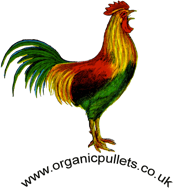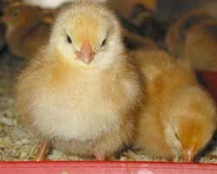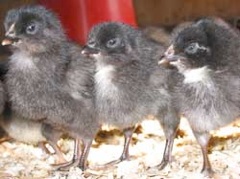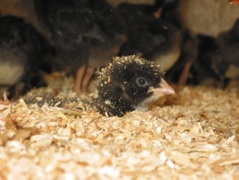Ben & Cathy Wetherden
For Range Reared Certified
Organic Chickens

Ben & Cathy Wetherden
For Range Reared Certified
Organic Chickens
S.A. Cert.Licence AB18834

website by Cathy Wetherden updated May 10
All photo’s taken by the Wetherdens at Eastwood Farm




Care of your hens
We are happy to sell pullets at any age from day old (vaccinated for Mareks) up to 18 weeks, in any quantity. Obviously the younger the pullets are, the more care they will require. This is made easier if you have a broody hen, as she will take care of keeping them warm. Once they are over 4 weeks old, they are generally off heat and at 6 weeks, they will go from chick crumb to grower pellets and depending on the weather will be outside. By the time they are 18 wks they should have built up a good immunity, (we use homoeopathic treatments to help with this), and will be perching, and ranging further from the house. Point of lay is a pullet at 18 weeks, although depending on the time of year, day length, weather, change of feed, breed and also the stress involved in the move it could be another 4 to 10 weeks before they start to lay. The longer the day the quicker they come into lay, although the longer they take to come in to lay the quicker the egg size increases. All our pullets have a natural day length, so will not be affected by a non- lit house. If possible it is a good idea to close off the nest boxes for new arrivals so that the pullets don't start to sleep in them, opening them up again when they are all perching at night. It is important to feed pullets on a good layer mash (fed dry) or pellet feed with a protein level of 18%, they are best fed ad-lib so that they all get a good chance to eat; they will need at least 140g of feed each a day. Mash is better for preventing boredom vices starting if they are in a confined space. All our pullets are fed pellets as it stops selective feeding, is cleaner and they can eat quickly before they go outside. It is a good idea not to feed too much corn until they are fully in lay and no more than 25g a day per hen and only in the late afternoon or evening as a scratch feed. It takes a while for the hens to digest corn and it is only usually around 10% protein. An egg is approximately 14%protein so if corn is fed in large quantities egg production is usually low or can stop altogether depending on natural protein sources, as hens usually prefer to eat corn than a meal or pellets. Hens also require grit to be fed separately, this acts like teeth and helps to grind down their food in the gizzard. It is not necessary to feed oyster shell to pullets on a layer meal or pellet as this contains everything for a good egg shell. It is a good idea to keep the feed in the house where it will stay dry and away from wild birds and the water outside. Once hens are over a year old they are likely to go through a moult, where they will change some or all of their feathers. This happens in the autumn and can take 8 weeks, egg production at this time is usually very low or non existent. It is a good idea to worm all poultry at this time of year, as a minimum. Moulting can happen at other times of the year if a short day is simulated. Soil Association organic standards for laying hens require 18cm of perch space per bird, 1 nest box per 6 hens, 6 hens per m2 of house space and 10 m2 of range per bird. Maximum flock size of 500 hens,(2000 with a derogation).




A mix of 3 wk old pullets
At only a few day’s old chicks enjoy burying themselves dustbathing
© 2010 Cathy Wetherden